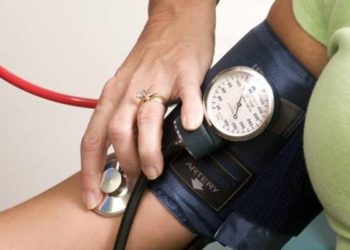2 Minute Medicine Rewind September 11, 2023
1. This phase 2 double-blind placebo-controlled randomized clinical trial found that 24% of participants who received adaptive pharmacotherapy successfully achieved continuous smoking abstinence at the 12-week postquit mark compared to 9% in the standard pharmacotherapy group.
Evidence Rating Level: 1 (Excellent)
FDA-approved smoking cessation protocols typically initiate medications on the quit-smoking day or a week prior. However, recent research suggests that extending precessation pharmacotherapy and utilizing adaptive treatment—adjusting a patient’s medication regimen based on their response—could enhance postcessation smoking abstinence. This phase 2 double-blind placebo-controlled stratified randomized clinical trial aims to compare 12-week smoking abstinence in daily smokers randomized to adaptive or standard pharmacotherapy. 188 participants (mean [SD] age, 49.1 [12.5] years; 54% female) were enrolled and randomized. Of these, 127 patients chose varenicline (randomization: 64 adaptive, 63 standard), and 61 chose nicotine patches (randomization: 31 adaptive, 30 standard) Adaptive treatment participants received their chosen medication four weeks before the target quit day, while standard treatment received a placebo and started their medications in-line with FDA-approved protocols (1-week prior for Varenicline, and quit-day for nicotine patches). Two weeks after starting medications, adaptive treatment participants who didn’t reduce smoking by at least 50% received bupropion 150 mg twice daily. Responders received placebo bupropion. Standard treatment participants were assessed and provided with placebo bupropion. Results showed that 12-week postquit biochemically verified 30-day continuous smoking abstinence was 24% in the adaptive group and 9% in the standard group (OR, 3.39; 95% CI, 1.43-7.99; P = .004). Among varenicline users, it was 28% in the adaptive group and 8% in the standard group (OR, 4.54; 95% CI, 1.57-13.15), and for nicotine patch users, 16% versus 10% (OR, 1.73; 95% CI, 0.39-7.99). Overall, these findings suggest adaptive pharmacotherapy yielded higher smoking abstinence rates compared to nonadaptive pharmacotherapy, and ultimately provides support for the use of precessation varenicline and nicotine patches, with bupropion for nonresponders.
1. This multicenter randomized clinical trial showed that compared to standard management, a cognitive training program provided no lasting effect on visuospatial index (VSI) scores in children aged 5½ to 6 years born very preterm.
Evidence Rating Level: 1 (Excellent)
Children born very preterm often face neurobehavioral challenges, including executive dysfunctions, that persist into adulthood. Cognitive training programs aimed at enhancing executive functions (EFs) have been explored in preschoolers and adolescents. However, their long-term effectiveness in children born very preterm remains uncertain. This multicenter randomized control trial aims to evaluate the impact of a computerized cognitive training program for working memory (WM) on long-term visuospatial skills and overall EFs in very preterm children. The trial enrolled 169 children (mean [SD] age, 5 years 11 months [2 months]; 54% female). Of these, 84 were randomized to the intervention—a WM cognitive training program for 8 weeks (25 sessions) alongside standard management. The remaining 85 were randomized to the control group—standard management which involves customary care management with speech therapy and/or academic support for children experiencing academic difficulties. There were no significant group differences in visuospatial index (VSI) score observed at 3 months or 12.9 months post-training. At the intermediate point (mean [SD], 3.0 [1.8] months after finishing training), a positive effect of the cognitive training program on WM was noted, with an increase of 4.7 points (95% CI, 1.2-8.1 points). This effect, however, was not sustained over the long term. Overall, these findings demonstrate that in children born very preterm with WM impairment, a cognitive training program showed no medium-term or long-term effect on visuospatial skill and only transiently improved WM, highlighting the challenges in improving EFs.
1. This large retrospective cohort study found that compared to non-use of non-steroidal anti-inflammatory drugs (NSAIDs), use of NSAIDs was associated with an increased incidence of venous thromboembolism in women with no use of hormonal contraception.
2. This increased incidence was more pronounced in those with concomitant use of high-risk hormonal contraception and less pronounced in women using concomitant low/no-risk hormonal contraception.
Evidence Rating Level: 2 (Good)
Both the use of hormonal contraception and NSAIDs have been individually linked with an increased risk of venous thromboembolism, through increased hypercoagulability and promoting thrombogenic disease, respectively. However, there is a paucity of literature surrounding the combined risk of venous thromboembolism in women using hormonal contraception and NSAIDs concomitantly. To evaluate the incidence of venous thromboembolism in this patient population, this nationwide cohort study followed 2 029 065 women aged 15 to 49 years living in Denmark between 1996 and 2017 for a median of 10 years to evaluate the incidence of venous thromboembolism in this patient population. Compared to non-use of NSAIDs, the adjusted incidence rate ratio of venous thromboembolism was 7.2 (95% confidence interval 6.0 to 8.5) in NSAID users not using hormonal contraception, 11.0 (9.6 to 12.6) in women using high-risk hormonal contraception, 7.9 (5.9 to 10.6) in those using medium-risk hormonal contraception, and 4.5 (2.6 to 8.1) in users of low/no-risk hormonal contraception. Moreover, in the first week of NSAID treatment, the adjusted number of extra venous thromboembolic events per 100 000 women was 4 (range: 3-5) for women who did not use hormonal contraception, a similar number for women using concomitant low/no-risk hormonal contraception (3, 0 to 5), but increased to 23 (19 to 27) for women using concomitant high-risk hormonal contraception and 11 (7 to 15) for women using concomitant medium-risk hormonal contraception. Overall, these findings suggest that the association between NSAID use and venous thromboembolism was more pronounced among women using high-risk hormonal contraception and lower in those using low/no-risk hormonal contraception.
1. This prospective study found an increased risk of cardiovascular disease (CVD) with higher intakes of five individual and two groups of food additive emulsifiers widely used in industrial foods.
Evidence Rating Level: 1 (Excellent)
High consumption of ultra-processed foods, which often contain cosmetic food additives, is common in Europe and North America and linked to higher rates of obesity, mortality and various non-communicable diseases. In particular, emulsifiers are among the most commonly used additives in industrial foods. Although considered safe by the European Food Safety Authority, experimental studies suggest that they may have deleterious effects on gut health. This study evaluated a total of 95 442 French adults from the prospective NutriNet-Santé e-cohort (mean age [SD], 43.1 [14.5] years, 79.0% female) to assess the association between intakes of food additive emulsifiers and CVD risk among. Over a mean follow-up period of 7-years, 1995 CVD events occurred, including 1044 coronary heart disease and 974 cerebrovascular disease events. Higher intake of celluloses (E460-E468, specifically E460 and E466) was linked to increased risks of cardiovascular disease (CVD) and coronary heart disease, with hazard ratios of 1.05 (95% confidence interval 1.02-1.09, P=0.004) and 1.07 (1.02-1.12, P=0.004), respectively, for each standard deviation increase in intake. Increased intake of monoglycerides and diglycerides of fatty acids (E471 and E472, specifically E472b and E472c) was linked to higher risks of all three outcomes: CVD (1.07, 1.04-1.11, P<0.001), coronary heart disease (1.08, 1.03-1.14), P=0.001), and cerebrovascular disease (1.07, 1.01-1.13, P=0.02). Finally, high intake of trisodium phosphate (E339) was associated with an increased risk of coronary heart disease (1.06, 1.00-1.12, P=0.03). Overall, these findings suggest that there is a positive association between CVD risk and higher intakes of specific additive emulsifiers, warranting a potential re-evaluation of regulations around food additive usage in the food industry and supports several public health authorities recommendations with regard to limiting exposure to non-essential controversial food additives.
1. This retrospective cohort study found that higher low-grade inflammation (LGI) scores were associated with significantly higher acute ischemic stroke (AIS) severity, worse early neurological deterioration (END), and poor outcomes at 90 days after stroke onset.
Evidence Rating Level: 2 (Good)
Ischemic stroke is a significant global cause of neurological morbidity and mortality. Inflammation, both systemic and local, plays a key role in its pathogenesis. There has been growing interest in using serum biomarkers to predict outcomes in AIS. The LGI score, a novel marker incorporating C-reactive protein, leukocyte counts, the neutrophil/lymphocyte ratio, and platelet count, has been successfully used to predict outcomes in various medical conditions. This retrospective cohort study evaluated 876 patients (median age [range] 70 [60.5-78], 58% male) with a diagnosis of ischemic stroke to assess the LGI score’s effectiveness in predicting functional outcomes in ischemic stroke patients. The LGI score, ranging from -16 to 16, with higher scores indicating higher intensities of low-grade inflammation. After adjusting for potential confounders (age, sex, vascular risk factors), a fourth quartile LGI score was independently associated with stroke severity (evaluated using the National Institutes of Health Stroke Scale score) at baseline (OR = 10.32, 95% CI: 5.38–19.78, p < 0.001) and at one week after stroke onset (OR = 7.59, 95% CI: 4.11–13.99, p< 0.001). In addition, the LGI score was found to be a risk factor of early neurological deterioration (END) (OR = 3.97, 95% CI: 1.57–10.06, p= 0.002) and poor outcomes on day 90 (OR = 2.65, 95% CI: 1.47–4.76, p= 0.001). The LGI score had an area under the curve (AUC) of 0.682 (95% CI = 0.64–0.72) and enhanced the AUC of the conventional model when used together. Overall, these findings suggest a strong correlation between the LGI score and AIS severity, supporting its use as a reliable predictor of unfavorable outcomes at 90 days after stroke onset in patients with AIS.
Image: PD
©2023 2 Minute Medicine, Inc. All rights reserved. No works may be reproduced without expressed written consent from 2 Minute Medicine, Inc. Inquire about licensing here. No article should be construed as medical advice and is not intended as such by the authors or by 2 Minute Medicine, Inc.






